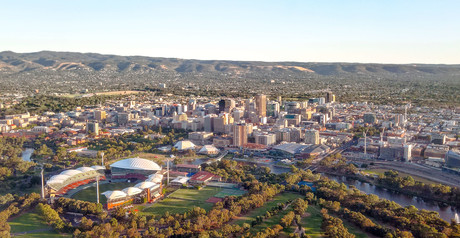Recharging Australia's energy sector

A new South Australian gas power project aims to bring increased security and reliability to the state’s electricity market, says Arcadis Business Leader John Nicholson.
The energy debate is alive and well in Australia, with massive shifts in the industry triggering a vigorous national debate and spurring a flood of reports, reviews and articles by both industry and governments.
Amidst all the noise it’s often been difficult to get a clear picture of what’s really going on. And, more importantly, what we need to do to fix any long-term underlying problems.
The trigger, as a recent Grattan Institute report, Mostly Working: Australia’s Wholesale Electricity Market, points out, was the rapid escalation in electricity prices for homes, offices and businesses in areas around the country.
South Australia in particular is undergoing significant changes to the energy sector. With its high renewables penetration (more than 50%, compared with a national average of just 5%), and reliance on imported coal-fired power via the Heyward interconnector, South Australia has been exposed to higher electricity costs and reliability issues.
A state-crippling blackout in 2016 has led to improvements in the management of South Australia’s energy sector and created opportunities for innovative developments, such as a new $800m LNG-to-power project in the Outer Harbor of Port Adelaide.
The project is being developed by Melbourne firm IG Partners through its wholly owned subsidiary Venice Energy, with Arcadis as the main project study partner.
The project’s ability to provide a firming product for renewables (particularly wind) and to deliver new local generating capacity is crucial to placing downward pressure on prices in South Australia’s energy market and improving security of supply to the state’s transmission network.
The Grattan study shows that wholesale energy prices quadrupled in South Australia between 2015 and 2017 as older, cheaper, mostly coal power generation assets were closed down and domestic gas supplies tightened.
The study concluded that while prices may never again be as low as they were a decade ago, the energy market is basically sound, even as it begins to adapt to a new era with diversifying electricity sources, higher costs, disruptive supply, demand technologies and rising environmental benchmarks.
The virtual pipeline
There’s no denying the sheer level of innovation in the electricity market that’s now taking place not only here, but internationally as well.
Australia is seeing a huge jump in investment in energy projects from overseas, alongside major market-led activity in most states and territories to fast-track clean-energy sources like solar, wind, tidal, hydro and even industrial-scale battery storage to help capture power as it’s generated for later use.
It’s a similar story for gas. Australian producers, with some pressure from government, have been boosting efforts to meet growing domestic and international requirements, but supply challenges remain given the complexities and huge costs of finding and developing new projects.
The Outer Harbor Project in South Australia is a glimpse of just how far we’ve come in a couple of years.
The project’s ‘virtual pipeline’ will import liquid natural gas (LNG) to a newly built wharf at Point Pelican near Adelaide where it will be stored, converted and used to supply a linked power station as well as sold into the state’s gas markets.
Project approvals and construction of the gas supply infrastructure are expected in the first half of 2019 with gas available to the market by the second half of 2020.
The power station is expected to deliver 500 megawatts (MW) of electricity into South Australia’s state grid by late 2021 via a two-stage development, helping to provide a ‘firming’ supply at times when renewables aren’t available and to fill a power gap that, by some estimates, will reach around 600 MW by early next decade.
The project is not planned to supply power continuously over a 24-hour period, but rather is being designed to support peak demand periods at the start and end of the day, or for seasonal surges during South Australia’s long hot summers.
Arcadis, I’m pleased to say, is the study partner on the project, helping to manage the preliminary design and modelling for both the storage and generation, site assessment, development of the delivery strategy and market engagement.
Keeping the lights on
The Outer Harbor Project is a sign of some of the new and innovative solutions that are emerging in the wake of Australia’s rapidly changing energy market, bringing improved energy security to South Australia without the need for public funding to develop or support it long term.
Many of the renewable electricity projects now happening around the country are taking a similar approach, bringing much needed innovation and diversity to our energy supply.
While it’s clear Australia’s energy future will increasingly rely on a mix of technologies, particularly as they improve in performance and fall in cost, we also need to continually work to guarantee reliable, affordable and low-emission electricity for everyone, no matter where they live or work.
The private sector, investors and entrepreneurs have a powerful role to play in this scenario, but so does government. As the Grattan report pointed out, government can help to create stable, consistent energy and climate-change policies that encourage new investment and innovation.
For more information: https://www.arcadis.com/en/australia/what-we-do/our-projects/australia/supporting-south-australia-to-meet-their-energy-needs/.
Fluoride boosts water-processed perovskite solar cells
Queensland University of Technology has developed a water processing method to fabricate more...
Multibuild solar installation delivered at City of Playford
Trinasolar partnered with Venergy Solar to deliver a multibuild solar installation across the...
Oracle assists major distributor in clean energy transition
Essential Energy, an electricity distributor in Australia, is said to have modernised its...










